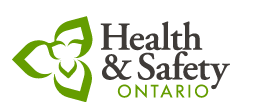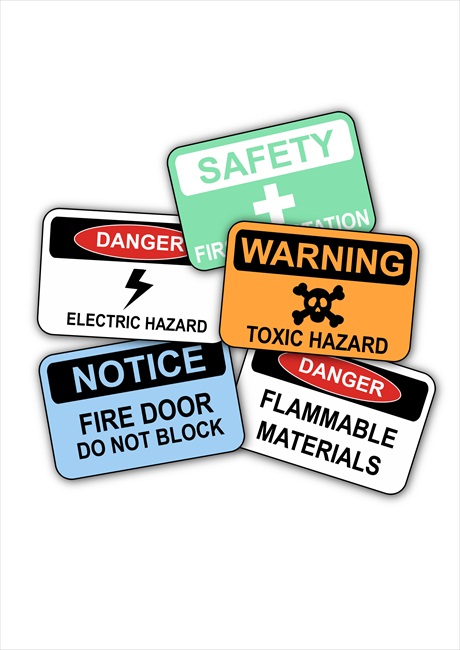In 2015, the Ministry of Labour, Immigration, Training and Skills Development gave out over $5.7M in fines to companies for failing to provide safety instruction and training, resulting in workplace injuries. Click here to see how ACUTE helps staff work effectively and safely by empowering workers and supervisors to be champions of health and safety awareness and excellence. When looking at the cost of workplace injury it is imperative to differentiate between direct costs and the sometimes surprising indirect costs related to injuries. Yet the bottom line remains is that injuries can be avoided with the right training and equipment.
Avoid Workplace Injury by using ACUTE’s Industry Proven Employee Training Checklist
 What are the Costs of Workplace Injury?
What are the Costs of Workplace Injury?
In a previous article, we discussed why health and safety training is important and the costs of neglect. If proper training and practices are not in place, companies may face increased costs for:
- Retraining employees – Training is the main defense against workplace injury and, if not provided by an approved and effective trainer, can result in repeats of the original safety issue. Companies can ensure they provide the right training the first time or risk incurring twice the cost and additional setbacks.
- Replacing broken equipment/environmental clean up – Harm isn’t limited to individuals. There are also costs associated with replacing damaged equipment and with the management of water and air pollutants to avoid further legal or regulatory costs.
- Loss of employee productivity – Both short and long-term productivity may be impacted by unsafe working conditions or limited awareness of healthy and safety hazards. The Workplace Safety and Insurance Board (WSIB) reported in 2014 that employees were off work for an average of 7.5 days one month after an incident.
- Indirect costs (insurance, legal, administrative) – In the short video below by ERI solutions, it is estimated that indirect costs of workplace injury can be 7x more costly than direct costs (i.e. medical bills and loss of work). This includes increased insurance fees, legal fees, and administrative time in handling claims with WSIB or other agencies.
- Regulatory penalties – Regulatory fines are incurred when employers are found to be negligent in adhering to regulatory requirements. In 2015, employers were fined over $5.7M for violations of Ministry of Labour, Immigration, Training and Skills Development regulations.
Before moving on to other costs of workplace injury, this video provides an overview of the cost of employee injury as well as non-compliance (USA).
- Damaged public image and consumer confidence – Employers operate alongside communities, families, and individual lives, all of which are impacted when incidents occur. Employers continue to face the repercussions of workplace incidents years afterward, from the BP oil spill to Imperial Metals’ mine disaster.
- Decline in company morale – Many kinds of work expose employees to a degree a risk, but this risk profile is less prominent in the minds of employees prior to an incident. Having more than one incident within a team or department can be devastating to employee morale or job satisfaction as employees feel less safe and protected by management.
Training is crucial for any employer who looks to manage health and safety for their employees. ACUTE offers comprehensive training for staff to prepare for and be proactive against health and safety issues.
“We have relied on ACUTE for years to train our staff and keep them safe on the job site.”
– Bob, Mill Wrighting Company
 What are the Legal Requirements of Health and Safety for Employers in Ontario?
What are the Legal Requirements of Health and Safety for Employers in Ontario?
As noted, in 2015 employers were fined over $5.7M for violations of Ministry of Labour, Immigration, Training and Skills Development regulations. These fines were largely due to counts of negligence in meeting the stipulated legal requirements for training within the Occupational Health and Safety (Act, R.S.O. 1990, c. O.1). Based on our understanding, the following training imperatives should be a priority for employers:
- Health and safety representative(s) are to be trained to allow them to effectively serve in their roles.
- Workplace employees who are not on a JHSC (Joint Health and Safety Committee) are to be trained to carry out duties delegated by a JHSC.
- Workers exposed or likely to be exposed to hazardous materials or physical agents are to receive training
- Information is to be provided to government inspectors on content, frequency, and the manner of instruction of any training programs offered.
- Health and safety awareness training is to be completed by every worker and supervisor.
 What Training Should Businesses Focus On?
What Training Should Businesses Focus On?
The most effective solution for avoiding injury costs is to provide proper training and a comprehensive health and safety program. Organizations must consider providing a minimum health and safety awareness training (worker / manager) and joint health and safety committee training (JHSC). Awareness training provides employees with the tools and understanding to work safely and know their rights. The JHSC training provides your team with expert guidance and a framework to develop, maintain, and extend a health and safety program at your workplace.
Based on WSIB’s annual statistical report on the claims filed , here are common workplace occupations and injuries, along with recommended training to ensure your team can continue working safely:
[table id=3 /]
Controlling Costs by Partnering with the Right Team
As part of a health and safety program, a budget is typically set, not only for training but also for the number of expected incidents and their associated costs. WSIB offers a helpful tool in helping companies manage these costs by providing a better understanding of the financial impact of injuries. For more details on the cost calculator tool, see here. You can also download the NEER Claim Cost Calculator here. With the budget in mind, your health and safety manager can assess the costs of incidents against the costs of training, working independently or in consultation with a qualified consultant to formulate an action plan.

ACUTE has trained company employees for over 25 years in getting the right training to help teams manage the costs of workplace injury. ACUTE’s business is to limit workplace incidents and the associated costs and to help cultivate and support an effective, safe working environment so that employees can return safely to their loved ones at the end of the day. Training and health and safety program excellence are a key focus for the ACUTE team, providing tailored course content and keeping an open door policy so clients can get the best advice even after the training is completed.
ACUTE is located in Waterloo, Ontario and services customers from the cities such as Toronto, Mississauga, Brampton, Hamilton, Milton, Kitchener, London, and Guelph as well as many other cities from across Ontario and North America.


